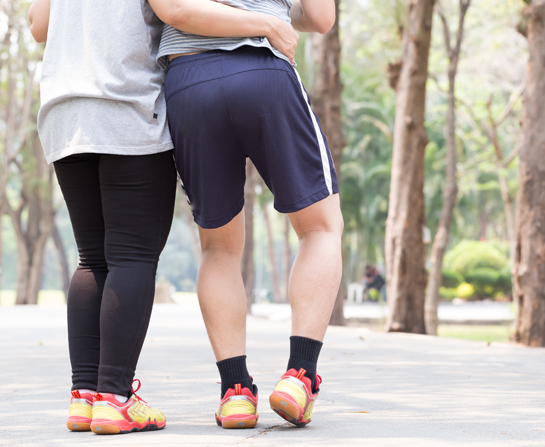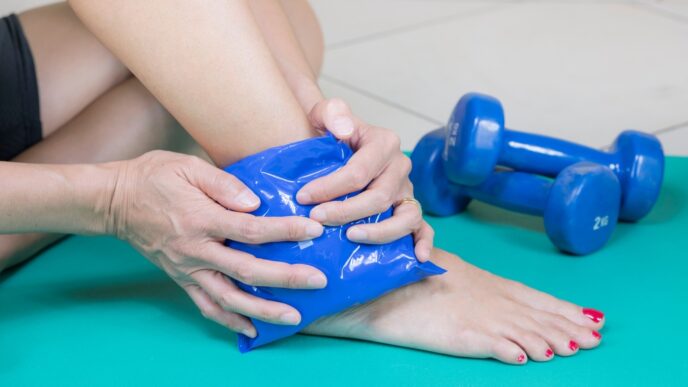Are You Doing It Right?
April 29, 2022 Return
Dr Manimaran Subramaniam Consultant Orthopaedic Surgeon
It is not enough to do the right thing in life; we need to do the right thing the right way. Ah, words of wisdom. Before you start questioning my sanity for waxing philosophical in an article that is about bone and joint health, rest assured – I was actually referring to playing sports and exercising. Now, why do I say this? What does the mantra ‘doing the right thing the right way’ have with working out and sports? “A lot, actually,” says Consultant Orthopaedic Surgeon Dr Manimaran Subramaniam.
He goes on to explain, “Malaysians have become more health-conscious these days. Aside from eating healthier, more of us are working out. Gyms are mushrooming all over the place. You see great turnouts at marathons and triathlons. There are also more people, especially youngsters participating in extreme sports such as skateboarding and mountain biking. Even those who aren’t into vigorous exercises are making an effort to be physically active with simple activities like brisk walking and jogging.” While it is great to see more people getting off their bums and into the gym, Dr Manimaran says that an issue has arisen: sports injuries.
“Every physical activity poses some risk of injury. Sports injury refers to an injury which arises directly or indirectly from any sports activities. This is why it’s so crucial for us to not only do sports and exercises but to do it the right way,” he stresses.
Acute vs. chronic
Sports injuries are divided into two types: acute and chronic. How do we know which is which? Dr Manimaran explains that acute injuries occur suddenly when playing or exercising. Sprained ankles, strained backs and fractured hands are some examples. You may have an acute injury if you experience the following:
- Sudden severe pain
- Swelling
- Difficulty in placing weight on leg, knee, foot or ankle
- An arm, wrist, elbow, hand or finger that is very tender
- Unable to move a joint normally
- Extreme weakness in the leg or arm
- A bone or joint that is visibly out of place.
Meanwhile, chronic injuries happen after a person has played sports or exercised for a long time. Signs to watch out for include:
- Pain when playing sports or exercising
- A dull ache when resting
- Swelling.
Must I see a doc?
When asked if all sports injuries warrant attention from a healthcare professional, he replies, “There are some injuries which you can treat on your own. This is where R.I.C.E. comes in.” No, we are not talking about the Malaysian food staple. R.I.C.E is a self-care method which helps to alleviate pain and relieve swelling.
R for Rest
Rest is the most effective way to begin the healing process after an injury. A sprained muscle is weak and susceptible to further injury, especially within the first few hours.
I for Ice
The effects of ice are most significant within the first two days of injury. Applying ice to an injury can help relieve pain and prevent swelling as this reduces blood flow to the wounded area. To avoid your skin from becoming too cold, use a cold pack or a bag of frozen peas (wrapped in a towel) instead of ice. If you do use ice, don’t place the ice bag directly on bare skin as frostbite can occur. Apply the ice for 15-20 minutes at a time; allow your skin to return to normal temperature in between icings.
C for Compression
An elastic bandage wrapped firmly around an injury can further prevent swelling and ease pain by keeping the area somewhat immobilized. The bandage doesn’t necessarily keep you from moving, but it can remind you not to move it. If a wrapping causes tingling or numbness in the extremity, remove it and rewrap the area more loosely. It shouldn’t be so tight that it causes discomfort or interferes with blood flow. Even gentle compression can help keep fluid away from the injured area.
E for Elevation
Propping an injury above your heart levels helps fluid drain away from the wounded area while reducing swelling. If you can’t elevate the injured area to a level above your heart, try keeping it at the same level or close to it. If you suffer an injury in the hips or buttocks, lie down with a pillow situated below your buttocks or lower back. This is to help lift the area of injury.
Aside from R.I.C.E., remember not to apply heat to the affected area during the first 72 hours as this will increase blood flow to that area.
When to get it checked
What about sports injuries which require medical attention then? How does one know when to see a doctor? According to Dr Manimaran, you need to get it treated by a doctor if you have the signs below:
- Severe pain, swelling or numbness from the injury
- Unable to put any weight on the injured limb
- The injured joint is deformed or feels unstable
- Recurrent injury at the same part of the body.
NSAIDS
There are several treatment options available but the type of treatment prescribed ultimately depends on the patient’s injury. Non-steroidal anti-inflammatory drugs (NSAIDS) for example, are given to inhibit the inflammatory process, and subsequently, reduce pain. NSAIDS are available in oral, patch or paste forms.
Physiotherapy
Post-injury physiotherapy is another key aspect of treatment. After assessing the patient’s injury, the therapist will initiate electrostimulation, ultrasound or cryocuff ice therapy to limit the effects of inflammation.
Rehabilitation
“The last thing you want to do while recovering is to inflict more damage to the injured area. After a certain period of immobilization, controlled movement of the affected area will help the patient to recover faster. With movement, comes stretching,” explains Dr Manimaran. “As the injury heals, scar tissue forms. After a while, the scar tissue will shrink. This shrinking brings the injured tissues back together. When this occurs, the injured area becomes tight or stiff. This significantly ups the risk of further injury. Hence to prevent the injured area from stiffening, stretching is necessary.”
He also cautions, “Don’t play sports until you can stretch the injured area without feeling any pain, stiffness or swelling. Even when you’re ready to play, start slowly and increase the intensity gradually.”
Surgery
When does an injury warrant surgery? “Surgical intervention is required to fix injuries that cannot be treated with the aforementioned methods. Examples of such injuries include torn Achilles tendons, fracture-dislocations of joints and torn anterior cruciate ligament of knee joints,” he explains. “If your doctor recommends surgery, ensure that you discuss matters thoroughly with them so you understand what the surgery entails and how long your rehabilitation is. All these factors matter because they will determine a good surgical outcome.”
Steering clear of injuries
Reiterating his earlier point, Dr Manimaran says, “Sport injuries are never a fun experience so why treat them when you can prevent them? This is why everyone needs to exercise and do sports the right way.”
Citing statistics, he says, “Lack of pre-exercise warm-up contributes to 50% of injuries. Warming up is highly beneficial as it warms up your muscles, gets your blood flowing and lowers injury risk. The easiest way to warm up is to work out slowly for the first few minutes, then pick up the pace. For instance, walk briskly for 5-10 minutes before running.”
But don’t just warm up; cooling down is equally important. “Cooling down post-exercise brings your heart rate and temperature back to normal. Cool down by ending your routine at a slower pace for the last 5-10 minutes.”
Other tips for minimizing your risk of sports injuries include:
- Keep your body flexible by doing stretching exercises at least twice weekly.
- Ensure you are approaching a particular sport with the right technique.
- Listen to your body. If you feel pain when exercising, stop immediately. Don’t work through the injury. You can expect sore muscles post-workout but you should never feel pain when exercising.
- Don’t be a weekend warrior. Trying to do a week’s worth of exercise in a day will strain your body tremendously.
- Use proper sports attire and equipment. For example, wearing the appropriate shoes can protect you from both acute and chronic overuse injuries. Ensure your equipment fits you properly, is in good working condition, is used correctly and consistently and is the right design for your sport.
Dr Manimaran concludes, “Sports and exercise are excellent tools for staying fit and healthy. However, what’s more crucial is doing these activities correctly. That way, you will be able to enjoy them as long as you desire.” So, do it right, folks!
If you like this article, do subscribe here.











